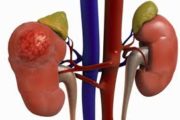The science behind a more meaningful understanding of sexual orientation
Michael Sean Pepper, University of Pretoria and Beverley Kramer, University of the Witwatersrand
This article is part of a series The Conversation Africa is running on issues related to LGBTI in Africa. You can read the rest of the series here.
People who are attracted to others of the same sex develop their orientation before they are born. This is not a choice. And scientific evidence shows their parents cannot be blamed.
Research proving that there is biological evidence for sexual orientation has been available since the 1980s. The links have been emphasised by new scientific research.
In 2014, researchers confirmed the association between same-sex orientation in men and a specific chromosomal region. This is similar to findings originally published in the 1990s, which, at that time, gave rise to the idea that a “gay gene” must exist. But this argument has never been substantiated, despite the fact that studies have shown that homosexuality is a heritable trait.
Evidence points towards the existence of a complex interaction between genes and environment, which are responsible for the heritable nature of sexual orientation.
These findings are part of a report released by the Academy of Science South Africa. The report is the outcome of work conducted by a panel put together in 2014 to evaluate all research on the subject of sexual orientation done over the last 50 years.
It did this against the backdrop of a growing number of new laws in Africa which discriminate against people attracted to others of the same sex. The work was conducted in conjunction with the Ugandan Academy of Science.
Existing research
The academy looked at several scientific studies with different focus areas that have all provided converging findings. These include family and twin studies. The studies have shown that homosexuality has both a heritable and an environmental component.
Family studies have shown that homosexual men have more older brothers than heterosexual men. Homosexual men are also more likely to have brothers that are also homosexual. Similarly, family studies show that lesbian women have more lesbian sisters than heterosexual women.
Studies on identical twins are important as identical twins inherit the same genes. This can shed light on a possible genetic cause. Studies on twins have established that homosexuality is more common in identical (monozygotic) twins than in non-identical (dizygotic) twins. This proves that homosexuality can be inherited.
However, the extent of the inheritance between twins was lower than expected. These findings contribute to the notion that although homosexuality can be inherited, this does not occur according to the rules of classical genetics. Rather, it occurs through another mechanism, known as epigenetics.
Epigenetics likely to be an important factor
Epigenetics relates to the influence of environmental factors on genes, either in the uterus or after birth. The field of epigenetics was developed after new methods were found that identify the molecular mechanisms (epi-marks) that mediate the effect of the environment on gene expression.
Epi-marks are usually erased from generation to generation. But under certain circumstances, they may be passed on to the next generation.
Normally all females have two X-chromosomes, one of which is inactive or “switched off” in a random manner. Researchers have observed that in some mothers who have homosexual sons there is an extreme “skewing” of inactivation of these X-chromosomes. The process is no longer random and the same X-chromosome is inactivated in these mothers.
This suggests that a region on the X-chromosome may be implicated in determining sexual orientation. The epigenetics hypothesis suggests that one develops a predisposition to homosexuality by inheriting these epi-marks across generations.
External environmental factors such as medicinal drugs, chemicals, toxic compounds, pesticides and substances such as plasticisers can also have an impact on DNA by creating epi-marks.
These environmental factors can also interfere with a pregnant woman’s hormonal system. This affects the levels of sex hormones in the developing foetus and may influence the activity of these hormones.
Future studies will determine whether these factors may have a direct impact on areas of the developing brain associated with the establishment of sexual orientation.
Looking to evolution
From an evolutionary perspective, same-sex relationships are said to constitute a “Darwinian paradox” because they do not contribute to human reproduction. This argument posits that because same-sex relationships do not contribute to the continuation of the species, they would be selected against.
If this suggestion were correct same-sex orientations would decrease and disappear with time. Yet non-heterosexual orientations are consistently maintained in most human populations and in the animal kingdom over time.
There also appear to be compensating factors in what is known as the “balancing selection hypothesis”, which accounts for reproduction and survival of the species. In this context, it has been demonstrated that the female relatives of homosexual men have more children on average than women who do not have homosexual relatives.
Future studies
The academy found that a multitude of scientific studies have shown sexual orientation is biologically determined. There is not a single gene or environmental factor that is responsible for this – but rather a set of complex interactions between the two that determines one’s sexual orientation.
However, more evidence is leading investigators to a specific region on the X-chromosome, and possibly a region on another chromosome.
The identification of these chromosomal regions does not imply that homosexuality is a disorder – nor does it imply that there are mutations in the genes in these regions, which still remain to be identified. Rather, for the first time, it suggests that there is a specific region on a chromosome that determines sexual orientation.
Although research has not yet found what the precise mechanisms are that determine sexual orientation – which may be heterosexual, homosexual, bisexual or asexual – the answers are likely to come to the fore through continued research. These findings will be important for the field of genetics and, more importantly, for those attracted to others of the same sex and society as a whole.
This article draws from the ASSAf report.
![]()
Michael Sean Pepper is Director of the Institute for Cellular and Molecular Medicine at University of Pretoria and Beverley Kramer is Assistant Dean: Research and Postgraduate Support in the Faculty of Health Sciences at University of the Witwatersrand
This article was originally published on The Conversation. Read the original article.
Warning: file_get_contents(https://plusone.google.com/_/+1/fastbutton?url=https%3A%2F%2Fkigalihealth.com%2Fthe-science-behind-a-more-meaningful-understanding-of-sexual-orientation%2F): failed to open stream: HTTP request failed! HTTP/1.0 404 Not Found in /home/kigal4health/public_html/wp-content/themes/goodnews5/goodnews5/framework/functions/posts_share.php on line 151







